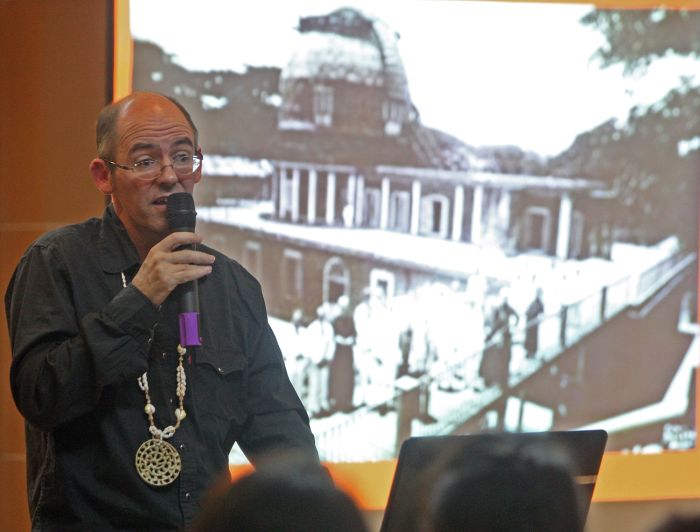Rebuild churches better, govt urged

Dr. Aitor Anduaga explains to the college students the importance of preserving the original historical structures.
(CDN Photo/Tonee Despojo)
The national government should “rebuild better” the churches and other structures of historical value that were damaged by typhoons and the Oct. 15 earthquake so they can withstand similar calamities in the future.
Dr. Aitor Anduaga, an Ikerbasque research professor from the University of Basque Country in northern Spain, aired his appeal during a discussion on typhoon and earthquake-resistant buildings in the Philippines to college students at the Jose R. Gullas Halad Museum at Jakosalem Street, Cebu City last Friday.
“They should examine the reasons why those have not been reconstructed or rehabilitated yet. Rehabilitation or reconstruction should start as soon as resources are also available,” Anduaga said.
Several historical churches in Cebu and Bohol collapsed in the Oct. 15, 2013 earthquake.
In Bohol, the churches that were damaged include the San Pedro Apostol Parish Church (Loboc), Church of our Lady of Light (Loon), Santissima Trinidad Parish Church (Loay), Church of Our Lady of the Immaculate Conception (Baclayon), Church of Our Lady of the Assumption (Dauis), San Nicolas Church (Dimiao) and Santa Cruz Parish Church (Maribojoc).
Original
The churches that were damaged in Cebu were the Basilica Minore Del Santo Niño (Cebu City), Cebu Metropolitan Cathedral (Cebu City) St. Catherine’s Church (Carcar City), Nuestra Señora del Patrocinio de Maria Parish Church( Boljoon ) and San Guillermo de Aquitania Church (Dalaguete).
Most of the historical churches in Bohol have not yet been rebuilt while most churches in Cebu are in the final stages of restoration except for the belfry of the Basilica Minore Del Santo Niño.
Anduaga, who has been in the Philippines since 2011, is known for his publication, Earthquake Building Overseas.
He said historians are needed to ensure that most of the materials that were originally used be recovered and used in the reconstruction.
“This is something that architects and engineers should look at if it is still possible to maintain or to recover the original,” he said.
When asked what is a resilient structure, Anduaga said, “I think engineers and architects should always find a balance between the catastrophic effects brought by an earthquake or typhoon. There should be a method that will be used.”
Disclaimer: The comments uploaded on this site do not necessarily represent or reflect the views of management and owner of Cebudailynews. We reserve the right to exclude comments that we deem to be inconsistent with our editorial standards.
